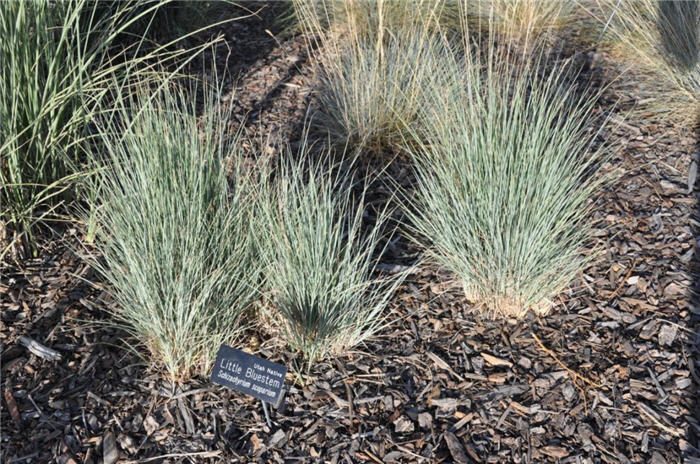| Botanical Name: Schizachyrium scoparium | |
| Common Name: Little Bluestem |

-
Anatomy
-
Culture
-
Design
Plant Type
Perennial, Grass
Height Range
1-3'
Flower Color
White
Flower Season
Summer, Fall
Leaf Color
Green, Blue Green, Red
Bark Color
n/a
Fruit Color
n/a
Fruit Season
n/a
Sun
Full
Water
Low
Growth Rate
Moderate
Soil Type
Sandy, Clay, Rocky, Unparticular
Soil Condition
Average, Poor, Well-drained, Dry
Soil pH
Neutral, Basic
Adverse Factors
n/a
Design Styles
Meadow, Mediterranean, Ranch, Spanish, Native Garden, Woodland
Accenting Features
Showy Flowers, Unusual Foliage
Seasonal Interest
Summer, Fall
Location Uses
Perennial Border, Shrub Border, With Rocks
Special Uses
Mass Planting, Lawn Alternative, Naturalizing
Attracts Wildlife
n/a
Information by: Stephanie Duer
Photographer:
Photographer:
-
Description
-
Notes
Little bluestem is a charming native to the shortgrass prairie, and quite adaptable to urban settings. It is a warm-season bunchgrass that forms an erect clump growing 1 to 3 feet tall. The foliage is green to purplish, being one of the few purple/red colored grasses that is perennial in our region. Its inflorescence are a sort of zig-zaggy clumps of white fuzziness, flowering in mid-summer. The grass turns a lovely deep reddish bronze in the fall, and holds the color through the winter months. A Utah native.
Grow in full sun in well drained, sandy, gravelly, or course clay soils. Prefers soils of low fertility; is tolerant of high pH but not of salt. Will not tolerate being over-irrigated. Mow in late winter, early spring. It seed matures in Oct and Nov.